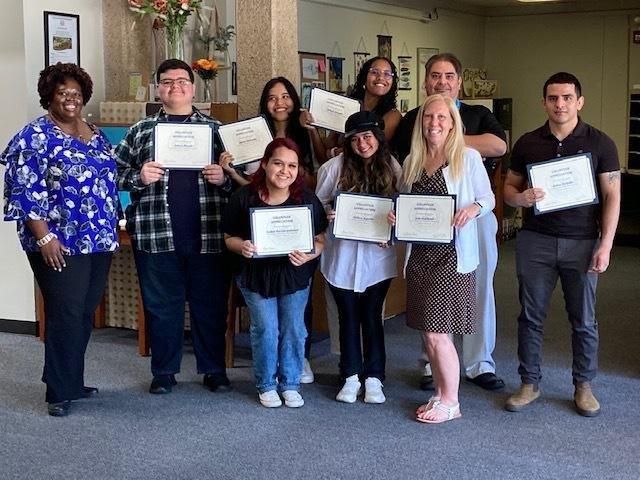Justice Matters
“All rise!” The 15 students in the Breaking the School-to-Prison Pipeline course stood as Judge Bradley Temple strode into the room. No trial was underway, but an air of formality pervaded the courtroom at the Gardner Betts Juvenile Justice Center in Austin. Temple had offered to answer questions about the judicial process before the students toured the facility.
A student raised her hand. “What kinds of referrals do you get from schools?”
Temple sighed. “As a former juvenile defender and as a judge, it’s frustrating when schools don’t deal with disciplinary issues on campus and instead refer kids here,” he said. “A lot of times, kids need mental health services; they don’t need to be arrested. Or, say, a student in special ed gets in a triggering situation related to their disability and hits a teacher. I recently had an 11-year-old special ed student in my courtroom for a hearing. That kid never should have been here.”
The premise of the “school-to-prison pipeline” is that schools are designed to serve kids who learn by reading, listening and sitting still and that students who don’t fit this model are more heavily disciplined. These can include students of color, LGBTQ students, people with disabilities, low-income students and those who have experienced trauma. Such students often experience disproportionate rates of suspension and expulsion. Students with disabilities, like the one in Temple’s courtroom, may act out for reasons connected to their disability and receive punishment rather than support. Zero-tolerance policies and the presence of school police reinforce the pipeline.

Assistant Professor of Social Work Natalie Beck Aguilera developed the course using information and connections from her years working in public schools, alternative schools and juvenile justice centers. Students in the course visit the Travis County Juvenile Justice Alternative Education Program for kids who have been expelled from public school. They meet with a school social worker and guest speakers who share their personal experiences with juvenile and adult criminal justice systems. To balance out the often-discouraging information they learn, they research alternatives to the pipeline that have been successful in other communities.
Criminal Justice major Maya Smalls ’23 had already been to Gardner Betts many times. She and four other St. Edward’s students intern there as mentors, helping young people detained at the center with life skills activities and — just as importantly — listening to them.
Smalls wasn’t surprised that most of the people she mentors at Gardner Betts are students of color. In class, she learned that Black students across Texas are far more likely than white students to receive out-of-school suspension or interact with the juvenile justice system.
“Every single time we go there, there are parallels between what I learn in this class and what I’m seeing before my eyes,” Smalls said.
Smalls is considering becoming a juvenile attorney, but she suggested college students with all kinds of career ambitions should take the class.
Beck Aguilera sees it the same way. “We all have a stake in this, and I want people to grapple with this, even as a community member,” she said. “This is happening with our tax dollars, in our schools.”
Illustration by Hannah Fenves




